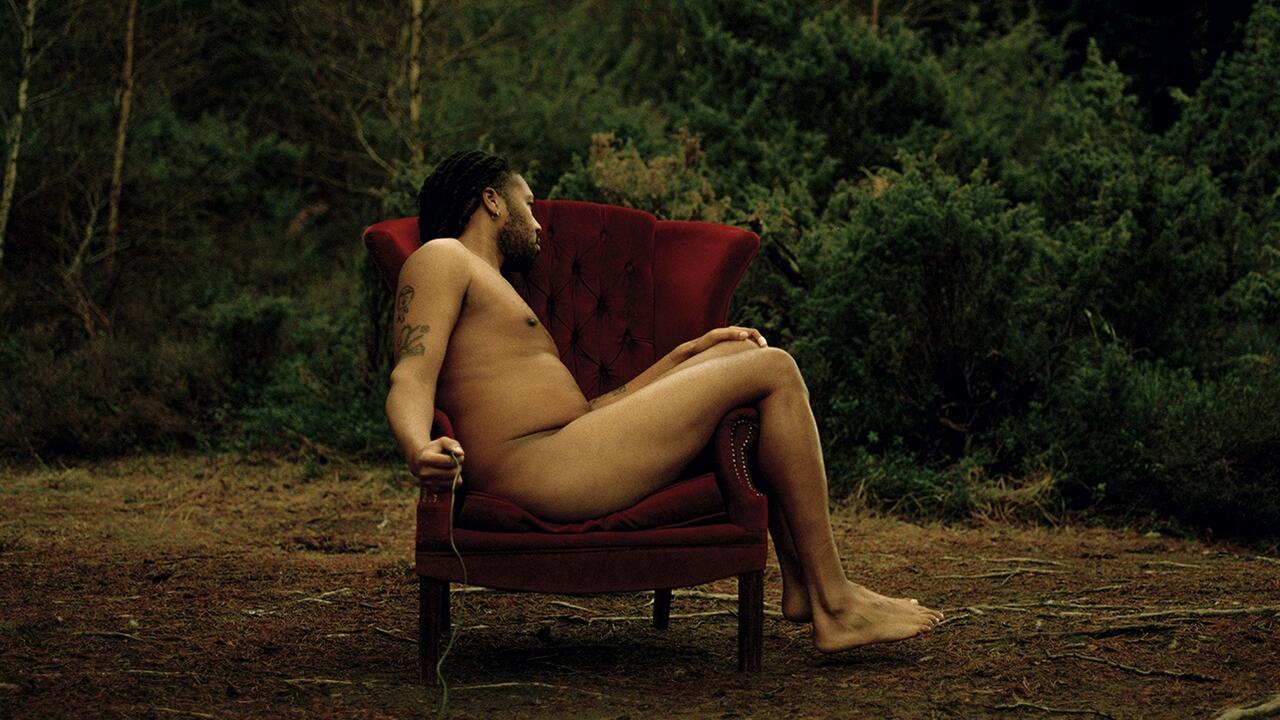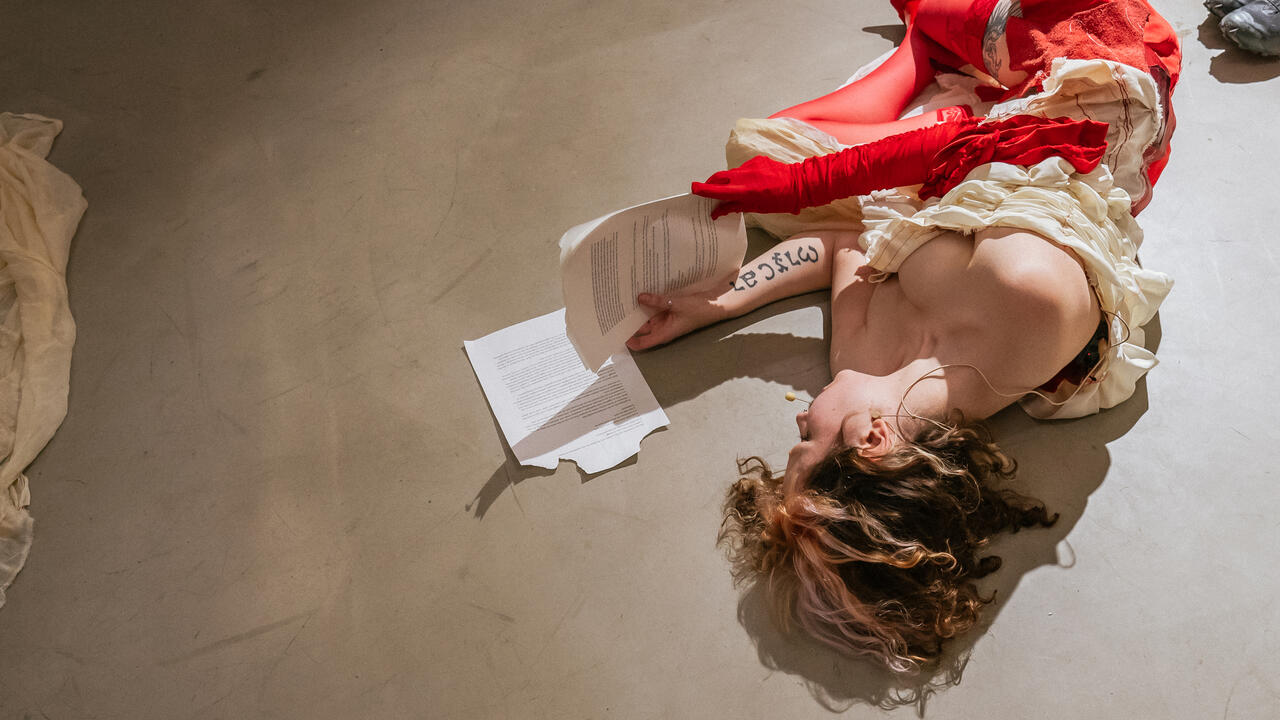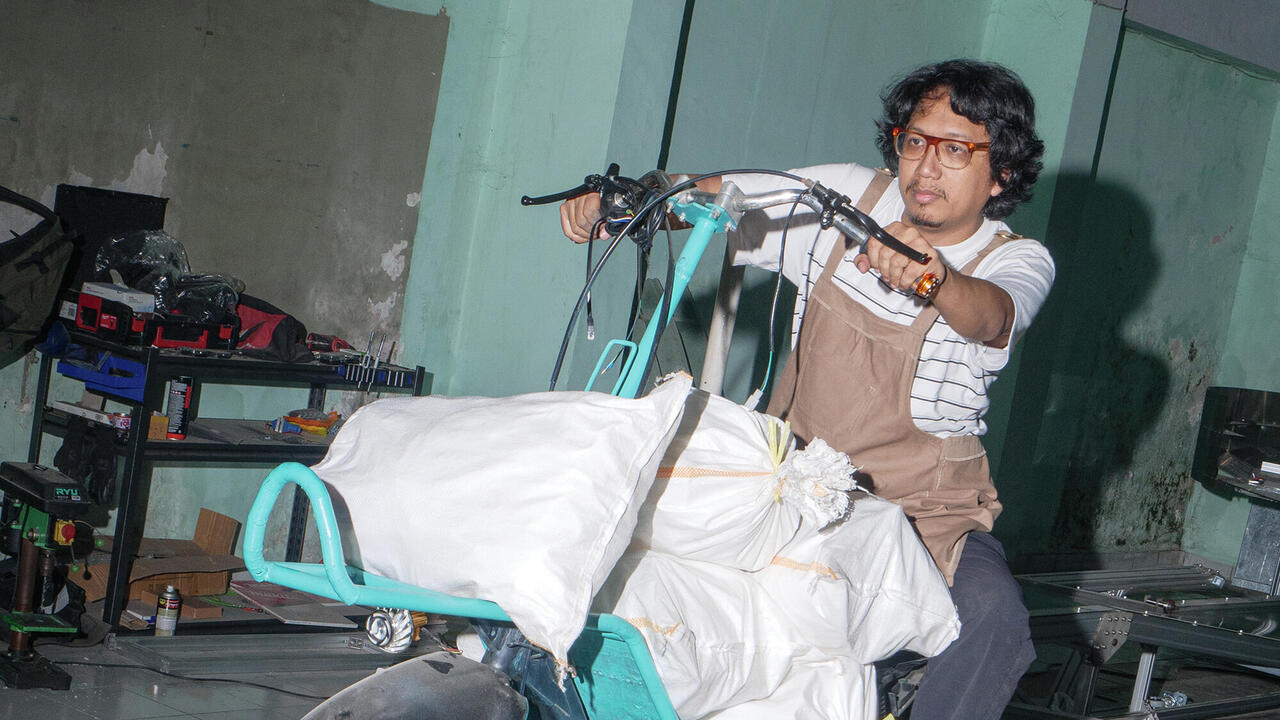Selma Selman’s Art Is Dirt-Cheap but Worth More Than Gold
On the occasion of her solo exhibition, ‘her0’, the artist speaks about the machine realm, Romani recycling traditions and embracing the role of contemporary alchemist
On the occasion of her solo exhibition, ‘her0’, the artist speaks about the machine realm, Romani recycling traditions and embracing the role of contemporary alchemist

‘We were taken from the ore-bed and the mine / We were melted in the furnace and the pit / We were cast and wrought and hammered to design / We were cut and filed and tooled and gauged to fit.’ Earlier this year, Selma Selman opened the performance Motherboards (2023–ongoing) by reciting Rudyard Kipling’s The Secret of the Machines (1911) while her father and other members of the Roma community in Ružica, Bosnia and Herzegovina – all wearing black coats and sunglasses, hammer in hand – pounded away at electronic equipment stacked in a yard in Hamburg’s Kampnagel.
‘My mother taught me that having your wallet is your power,’ Selman continued. ‘She taught me that having my own money would make me an independent woman. A motherboard provides connectivity between the hardware components of a computer… We will not be fully free until we’re worth more than gold.’

Selman is an artist who is recognised for her defiant, militant actions. Wielding axes and power tools, charging at mechanical equipment (with a penchant for Mercedes cars), or weaponising her voice to assault the audience (You Have No Idea, 2016–ongoing) have become key themes in her exhibitions and performances, which include the most recent editions of Manifesta and Documenta. While her work addresses the brutal past of the Balkans, both playing with and resisting stereotypes attributed to Roma people, violence and destruction are merely surface-level tools used to etch out a bigger political narrative.

‘Transformation is at the core of my practice: scrap metal into gold, stigmatized labour into prestigious labour, incapacity into invention,’ said Selman, speaking to me from her Berlin studio as she recounted how she collaborated with scientists to extract gold from over two hundred dismantled motherboards in a process called ‘cupellation’. The result was Motherboards (A Golden Nail) (2023), a gilded ten-centimetre-long industrial nail currently on display in her solo exhibition ‘her0’ at Gropius Bau.
‘I learned how to make gold in a non-toxic way,’ she continued. ‘I will teach this to my community… It makes me feel like a female Prometheus.’ Gold is important in Roma culture and is a recurring theme in Selman’s work; her 2022 performance in front of Kassel’s Fridericianum was titled Until We Are Worth More Than Gold. Selman does not fetishize the material however, nor does she romanticize her heritage or childhood.
Speaking about her home village, where she started painting at the age of seventeen, she recalled how she never kept a painting ‘for more than a day or so’ as her father, who now appears in many of her performances, used to sell her work. ‘He was like my manager. I would paint non-stop, you wouldn’t believe: horses, donkeys, landscapes, portraits... I was a machine’. We both paused at this realisation.
Machinery is another recurring motif in her work. Several pieces involve images of bodies, portraits and statements painted on vehicle parts. She recounted how her father made a living salvaging automobile parts, then added: ‘over the last 100 years or so the Roma people were collecting scrap metal, recycling it. It’s only recently that [modern Western] societies began thinking of recycling as something important.’

In Platinum (2021) at the National Gallery in Sarajevo, a work that took shape over several weeks, Selman and her family transported several car carcasses to the galley, where they dismantled the catalytic converters to extract the titular precious metal, which she then shaped into a minuscule axe presented in a small vitrine.
Selman is also interested in other types of recycling. Hanging in a passageway at Gropius Bau is Dirt 0 (2021), an abstract 12 × 2 m canvas evoking the energetic brushstrokes found in the dark hues of an Anselm Kiefer painting. The sheet, resembling a cloth one would use to protect a vehicle from damage, is covered in the sediment of metal parts that her family transported in their van.

The most recent work on view at ‘her0’ is Satellite Dish (2023). Selman emblazoned the hefty, patinated technology with the words ‘God Make Me the Most Famous So I Can Escape This Place.’ ‘I became a public figure in my community very early on,’ she said. ‘Back at home I’m Roma. But I’m still also a white woman there, because I’m part of what people consider ‘the West’. But once in this ‘West’, I’m not white enough, or dark enough. It’s there in the exhibition title: Her0 – it’s about being both a hero and a zero.’
We delved further into the symbolism of the satellite dish and found ourselves exploring its legacy in former Soviet republics. TV satellite dishes, objects of desire, privately owned, spreading across walls and roofs of buildings like a fungus, fed into a single god-like network – as Selman described it – that was meant to save one from the mundanity of existence.

‘It’s about looking for a better tomorrow. For some, success is about enjoyment and having a career, for others it’s escaping into safety.’ Selman’s work and life is a demonstration of this balancing act. The irony of the satellite being installed in Berlin next door to a museum devoted to terror and persecution in Germany is not lost on her. She paused and smiled as she lit a cigarette. ‘I’m not sending general statements through my work. I am showing the path that I follow. This is the work that never stops.’
Selma Selman’s ‘her0’ is on view at Gropius Bau, Berlin, until 14 January 2024
Main image: Selma Selman, Motherboards, 2023, performance, Krass Kultur Crash Festival, Hamburg. Courtesy: the artist; photograph: Mario Ilić























